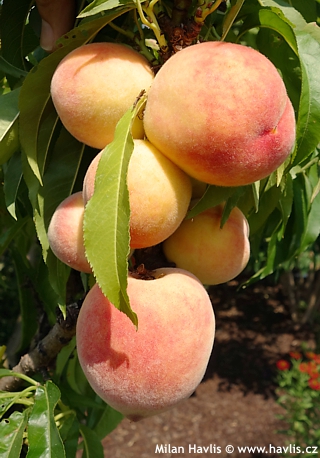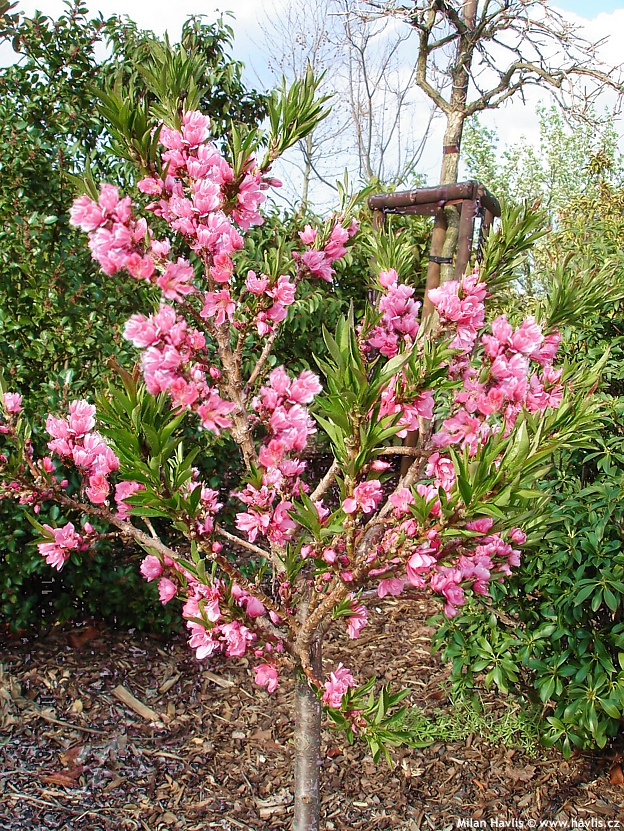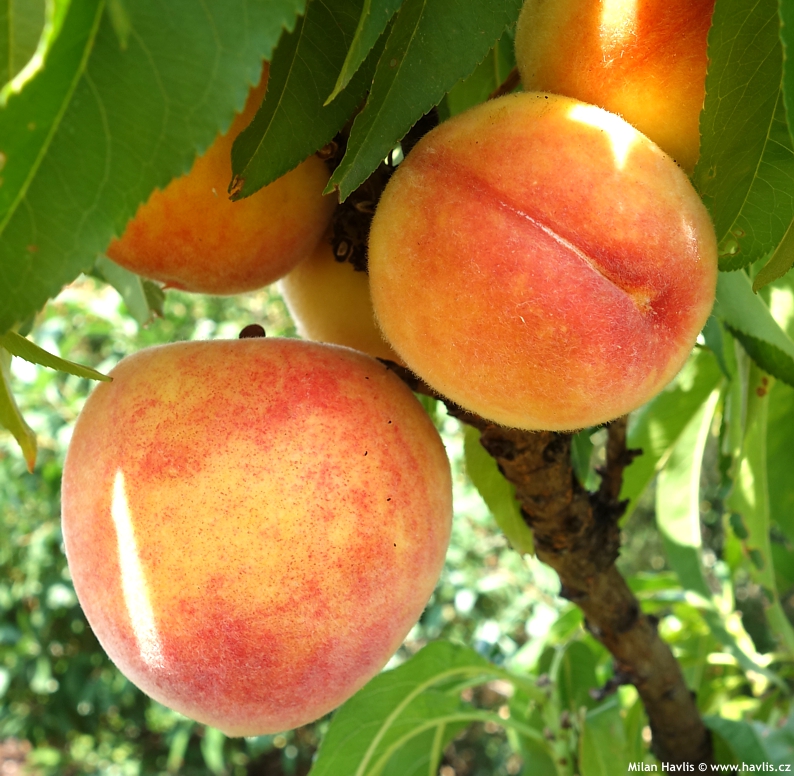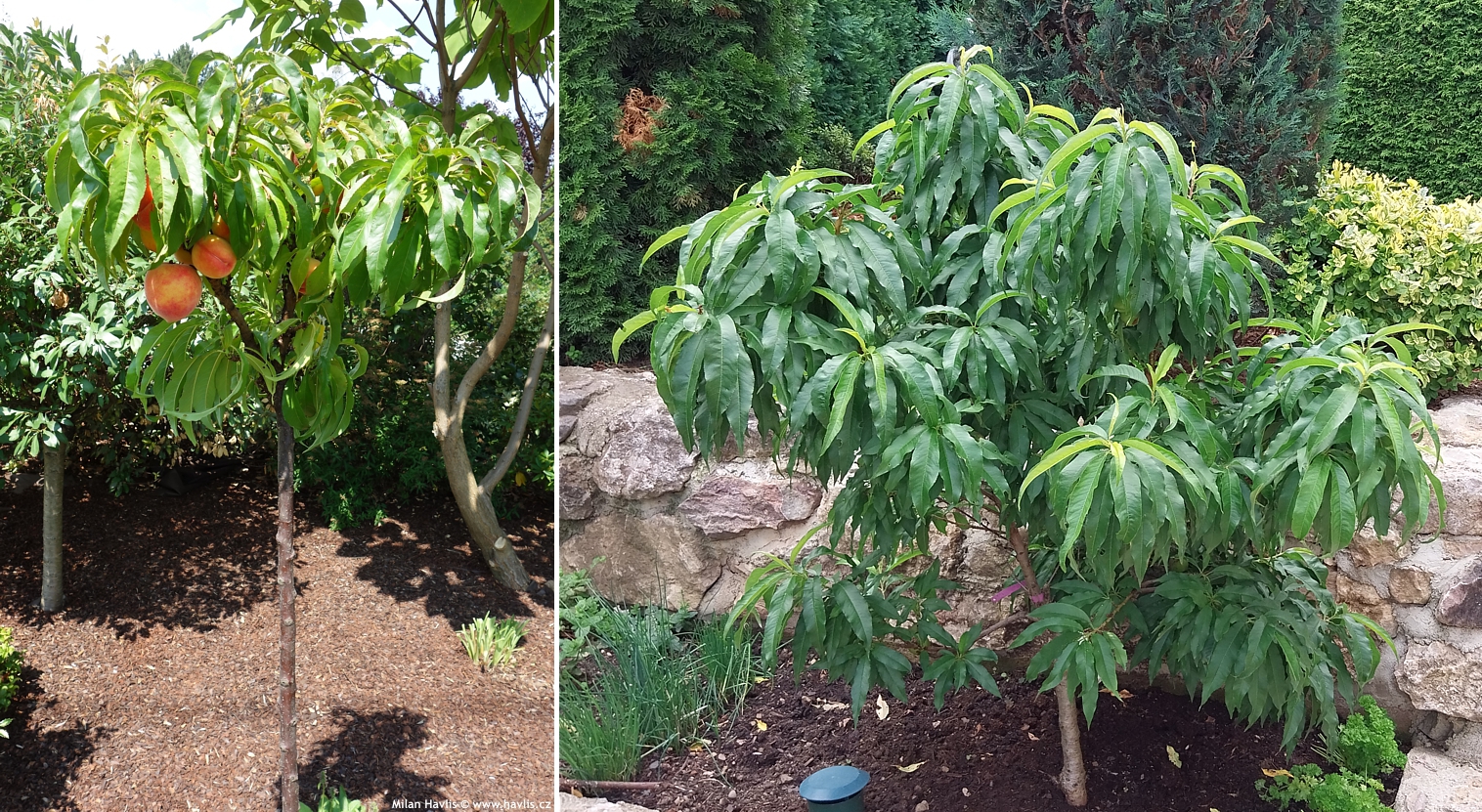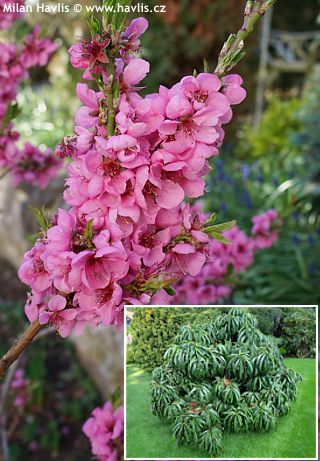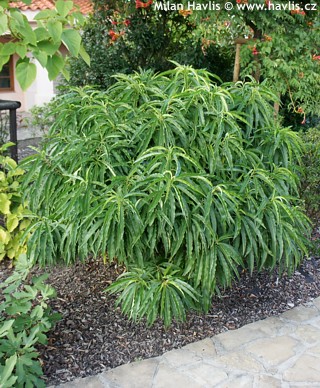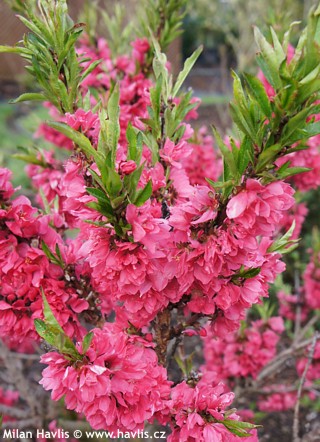Prunus persica 'Pix-Zee' 'AMBER'® dwarf peach tree - midseason
Prunus
Dwarf fruit trees are sought-after plants mostly among those who don’t have a garden, just a patio or a balcony, or their garden is too small to accommodate a large fruit tree. They are usually self-fertile and grafted on slow-growing rootstocks that are happy to live in a large pot and don’t need to spread its roots in the ground.
AMBER® is a dwarf peach tree developed by Chris “Floyd” Zaiger (1926-2020) who devoted all his adult life to breeding stone fruit. He set up Zaiger’s Genetics in Modesto, California, USA, where plants are bred using hand pollination rather than using DNA manipulation. As of 2020 they patented 446 fruit tree varieties. Floyd Zaiger is also the man behind a huge success of interspecific hybrids of plums and apricots called pluots (plumcots) and apriums which nowadays seem to gain more and more popularity.
AMBER® dwarf peach produces mid-sized fruit of excellent flavour and beautiful skin. It is golden orange and scarlet red outside and rich yellow inside. The flesh is very sweet, low in acidity, aromatic, and juicy. It matures in late July (C.E. climate) and can be harvested for about two weeks. It exhibits slow growth and short, stiff branches densely covered with large, pink flowers in early spring. AMBER® is self-fertile and is commonly grafted onto dwarfing rootstock Rootpac-20 (or similar) which makes it suitable for growing in large pots on balconies and patios. European patent No. 11069 was granted in 1998 same as Australian patent No. AU1142, surprisingly no US patent was applied for.
We suggest planting peach trees in open space so they can feel cold, spring breeze which will delay flowering and prevent the flowers from frost damage should they open too early. Leaf curl may be a problem but rather than chemical treatments, which do not work well anyway, we suggest feeding the tree when curled leaves appear to promote growth of new foliage. Remove and burn curled leaves to reduce further infection.
Peach trees like slightly alkaline soil, moist but well drained. Do not transplant bare-root trees in autumn, only in spring. Dwarf trees do not require pruning but rejuvenation may be done once every 10 years or so. Do it either in spring after flowering or in mid-late August after harvesting the fruit. The best yield is always from an unpruned tree which grows naturally. Hardy to about -27°C (USDA zone 5b).
Last update 01-12-2021
Goods are shipped all over Europe. For Russia and U.K. and for further details please read about SHIPPING OPTIONS HERE.
Are you interested in a serious discount for orders NOV-FEB? Check your options here.
THE PRICES INCLUDE VAT of 15%. For quick conversion you can use 1 CZK = approx. 0.04 EUR
- STANDARD QUALITY - Plants of this group are 1st class quality with number of branches and overall density adequate to their size and age, considering they were container grown.
- DE LUXE QUALITY - This label guarantees a luxurious quality of manually selected plants that, compared to their height and age, are exceptionally dense and beautiful.
- EXTRA - These plants are usually mature and bigger specimens with exceptional overall appearance.
- STANDARD (as described in the plant form) means a tree with a trunk of 190-210 cm and a crown at the top, unless specified differently. The commercial size for trees is their girth measured in the height of 1m from ground.
- HOBBY - These plants are of the same quality as our standard-quality plants but younger and therefore cheaper.
- SHRUB - a woody plant with branches growing bushy from the ground level.
- HALF-STANDARD or MINI-STANDARD - a small tree with shorter trunk, its size is usually specified.
- FEATHERED - These are trees with branches growing already from the base of the trunk and up along the stem.
- GRASSES and PERENNIALS - Sizes given usually read the diameter of the pot or the clump, as specified.

































